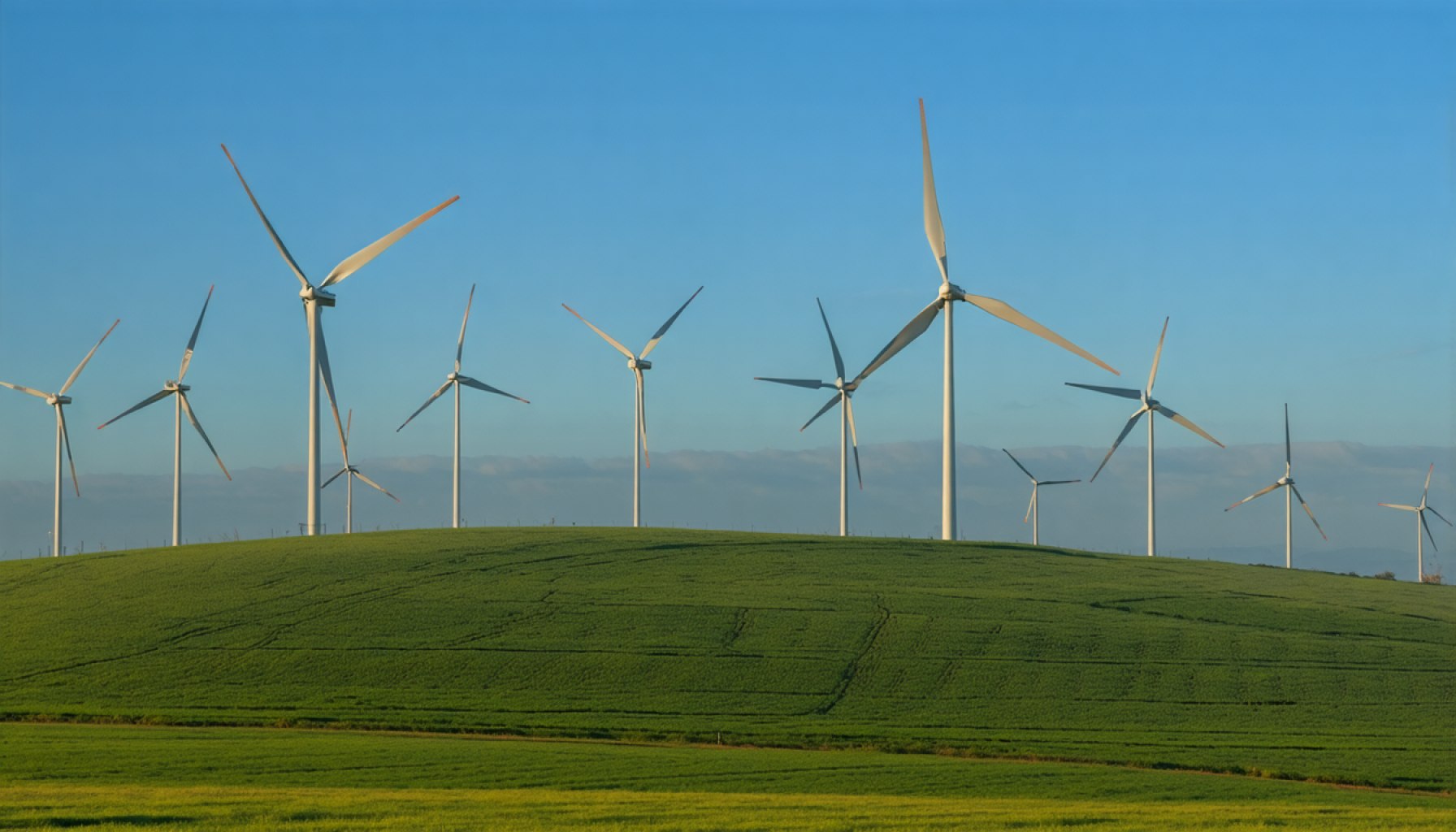- Most modern wind turbines spin clockwise, influenced by historical design choices based on aircraft propellers and daily objects.
- Early turbines mirrored anticlockwise windmills, crafted by right-handed machinists on leftward lathes.
- The prevailing clockwise rotation persists due to infrastructural and manufacturing norms, not aerodynamic advantages.
- Some turbines spin counterclockwise based on logistical needs, contributing to design diversity.
- Geographic factors, like the Coriolis effect, suggest potential efficiencies in opposing rotations but aren’t widely adopted due to cost and complexity.
- The interplay of convenience, tradition, and cost generally outweighs the aerodynamic potential of non-standard rotations in turbine design.
A stroll through the rolling fields of a wind farm often leaves spectators entranced by the rhythmic dance of turbine blades slicing through the air. Yet, the unassuming direction of their spin hides a story layered with historical quirks and engineering intricacies. While one might assume all wind turbines spin uniformly, reality offers a different tune.
With the grace of giant dancers, most wind turbines today indeed whirl clockwise. This predominant direction harks back to the infancy of turbine design, where early engineers drew inspiration from the spin of aircraft propellers and the rotational norms of everyday objects like screws and clocks. In the past, this clockwise tendency differentiated modern turbines from their predecessors found in windmills, which famously turned anticlockwise due to the ergonomic leanings of right-handed machinists crafting blades on leftward-pointing lathes.
Yet, despite the historical weight, not all turbines conform to the clockwise standard. Some markets and designs opt for the alternative, creating a mix partly dictated by logistical convenience rather than aerodynamic superiority. This choice, more volte-face than virtuous, stems from the established infrastructure and manufacturing processes catering predominantly to the clockwise archetype.
Interestingly, there exists a scientific undercurrent suggesting potential efficiencies in opposing turbine rotations depending on geographic locale. The Northern and Southern Hemispheres possess distinct atmospheric dynamics due to the Coriolis effect, which subtly influences the wake of a turbine. This wake—essentially an air trail left by spinning blades—affects nearby turbines’ efficiency. Theoretically, aligning rotation with local atmospheric quirks could maximize output. However, the fiscal and computational demands of such optimizations often outweigh the perceived benefits, steering manufacturers toward the familiar clockwise path.
Ultimately, the tale of turbine rotation is one where convenience, convention, and cost dance more vividly than the scant aerodynamic advantages of directional defiance. As engineers continuously seek to harness wind’s invisible force with ever more sophistication, perhaps one day the blades will spin against the norm, beckoning efficiency from every breeze, wherever it may blow.
Why Do Wind Turbines Spin Clockwise? Unveiling Historical Choices and Engineering Nuances
Historical Origins and Engineering Decisions
Wind turbines are mesmerizing feats of engineering, gracefully harnessing the wind’s energy. The reason most wind turbines spin clockwise is rooted in historical and practical reasons:
1. Historical Inspiration: Early turbine designs drew inspiration from pre-existing technologies like aircraft propellers, which were designed to spin clockwise following the norms of screws and clocks. Historical design standards favored right-handed users and machinists who crafted blades to fit this pattern.
2. Manufacturing and Infrastructure: Once established, the inertia of large-scale production and infrastructural design overwhelmingly supported clockwise spindle. This built-in convention is difficult to overturn due to the costs associated with re-tooling designs to accommodate an alternate direction.
Implications of Spin Direction
– Aerodynamics and Efficiency: The direction of a turbine’s spin can slightly affect the airflow and the resulting energy efficiency. However, this is often secondary to cost considerations in large-scale energy production.
– Coriolis Effect: In some discussions, the Coriolis effect, which affects weather patterns depending on hemisphere, is mentioned as potentially influential on turbine efficiency. This atmospheric phenomenon can theoretically impact the way air and thus turbine wakes behave, although practical implementations tailored to Coriolis specifics are rare due to cost constraints and the complexity of calculations involved.
Advantages and Disadvantages
– Pros of Clockwise Design:
– Standardization: Maintains design and production consistency, which helps reduce manufacturing and operational costs.
– Proven Historical Record: The clockwise design is well-documented and understands, reducing uncertainties in long-term functionality and maintenance.
– Cons of Current Orientation:
– Limited by Convention: May not be optimized for specific geographic conditions, potentially leaving efficiency gains on the table.
– Adaptation Challenges: Deviating from the standard introduces additional costs and complexities that can stall innovation.
Future Insights and Innovations
The future of wind turbine design may hold shifts toward optimizing for every potential efficacy avenue, including directionality. As computational methods and algorithms advance, cost-efficient retooling of turbine designs to harness geographical winds may become viable.
Quick Tips for Renewable Enthusiasts
– Understanding Local Winds: Emphasizing locally collected wind data can aid in energy project planning, fostering situational efficiency without extensive redesigns.
– Stay Updated on Technology: Follow innovations in renewable energy technology to remain informed about potential changes to wind turbine design norms.
Conclusion
Ultimately, why do wind turbines spin the way they do? It’s a blend of historical inertia, practical engineering, and global standards. While significant efficiency gains might be achievable through design variations, the costs often outweigh these benefits. However, as technology evolves, opportunities for optimization and efficiency improvements may emerge, driving innovative solutions in wind energy.
For more stories on renewable energy and technological advancements, consider visiting U.S. Department of Energy and Renewable Energy World for the latest insights and updates.
